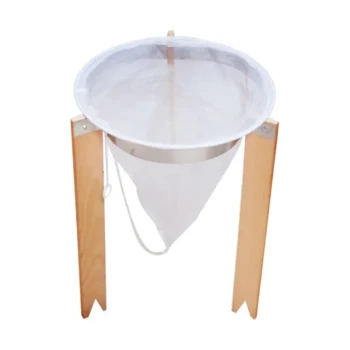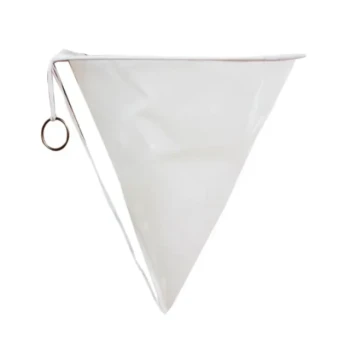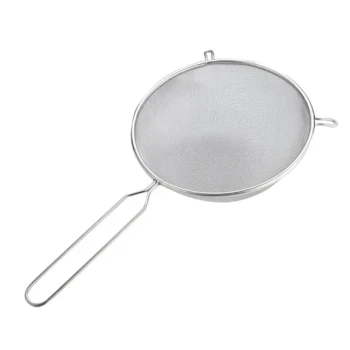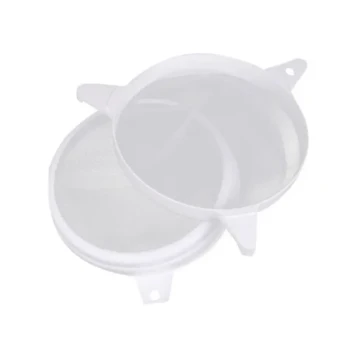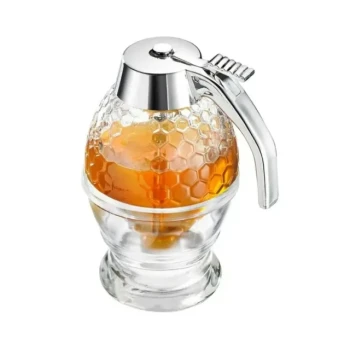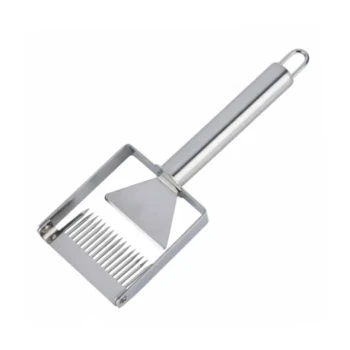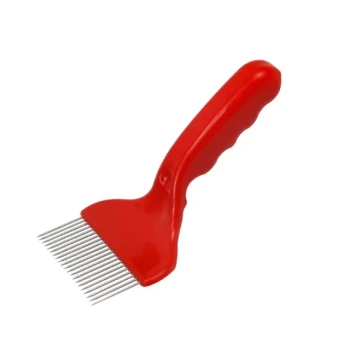Ultimately, no. Filtering honey after extraction is not a strict requirement, but it is a standard practice for most beekeepers. The choice to filter is driven by the desire to remove physical debris like beeswax, propolis, and bee parts, creating a clearer final product that meets consumer expectations.
The decision to filter honey is not about right or wrong; it's a choice between producing a visually clear, "clean" honey versus preserving the honey in its most raw and unprocessed state, complete with all its hive components.

The Primary Goal of Filtering Honey
Filtering, or more accurately, straining, is a post-extraction step to refine the final product. The level of filtration directly impacts the honey's appearance and texture.
Removing Physical Debris
The extraction process inevitably introduces small particles into the honey. The main purpose of straining is to remove this visible debris, which can include bits of beeswax, propolis, and sometimes even bee parts.
Achieving Visual Clarity
For many consumers, the ideal honey is a clear, golden liquid. Straining the honey ensures this aesthetic appeal, making the product more marketable in a traditional retail setting.
What Stays Behind
Simple straining with cheesecloth or a coarse sieve removes the largest particles. However, it leaves behind most of the microscopic elements, such as beneficial pollen grains, that are characteristic of raw honey.
Common Straining Methods and Tools
The method you choose depends on the scale of your operation and your desired outcome.
Simple Straining with Cheesecloth
This is the most accessible method for hobbyists. Draping a few layers of cheesecloth over a food-safe bucket and pouring the honey through is effective for removing large pieces of wax and debris.
Using Nylon Filters and Sieves
A step up from cheesecloth involves using nylon filters or a two-stage metal sieve. These tools fit securely over a bucket and use progressively finer mesh to separate out smaller particles more efficiently.
Integrated Sieve and Bottling Tanks
For larger operations, a combination honey sieve and bottling tank streamlines the process. This equipment allows honey to be strained directly into a tank equipped with a gate valve, making it ready for immediate bottling.
The Case for Unfiltered Honey
Choosing to leave honey unfiltered is a deliberate decision, often based on a different philosophy about the final product.
Preserving the "Raw" State
Unfiltered honey is honey in its most natural form, straight from the extractor. It contains all the original hive components, which some consumers actively seek for their perceived natural benefits.
A Matter of Aesthetics
Cloudy honey with specks of wax or pollen isn't "dirty"; it's simply less processed. This appearance signals a more rustic and "raw" product, which has its own market appeal.
Understanding the Trade-offs
Your decision to filter should be based on a clear understanding of what you gain and what you give up.
Purity vs. Processing
Filtering provides a visually "cleaner" product free of solids, but it is an additional processing step. Unfiltered honey is more raw but will contain particles that some may find unappealing.
Consumer Perception
Your target audience is a critical factor. If you are selling to a general market, a clear, filtered honey is often the expected standard. If you are catering to a health-conscious or natural foods market, unfiltered honey may be more desirable.
Impact on Crystallization
Fine particles of wax and pollen in unfiltered honey can act as nucleation sites, potentially speeding up the natural process of crystallization. Filtering can help slow this process, contributing to a longer liquid shelf life.
Making the Right Choice for Your Goal
Ultimately, the level of filtration should align with your specific objective.
- If your primary focus is commercial sales: A simple straining process to remove visible debris is the minimum standard to meet consumer expectations for clarity.
- If your primary focus is personal use: You can choose to skip filtering entirely to enjoy the honey in its most raw and natural state.
- If your primary focus is a "natural foods" market: Lightly straining with a coarse filter to remove only the largest particles can offer a good balance, preserving the raw character while ensuring a reasonably clean product.
Decide on your desired final product first, and let that goal dictate whether and how you filter your honey.
Summary Table:
| Filtration Level | Key Characteristics | Best For |
|---|---|---|
| Unfiltered | Contains all hive components (wax, pollen); rustic appearance. | Natural foods market, personal use. |
| Light Straining | Removes large debris; retains pollen and raw character. | Beekeepers targeting a balance of clarity and rawness. |
| Standard Filtering | Clear, golden liquid; free of visible particles. | Commercial sales, general retail market. |
Upgrade Your Honey Processing Efficiency with HONESTBEE
Whether you're a commercial apiary aiming for a perfectly clear product or a distributor sourcing high-quality raw honey, the right equipment is key. HONESTBEE supplies the durable, wholesale-focused beekeeping supplies and equipment you need to streamline your post-extraction process, from simple nylon filters to integrated sieve and bottling tanks.
Let us help you meet your market's demands with reliable gear. Contact our experts today to discuss your operation's needs!
Visual Guide
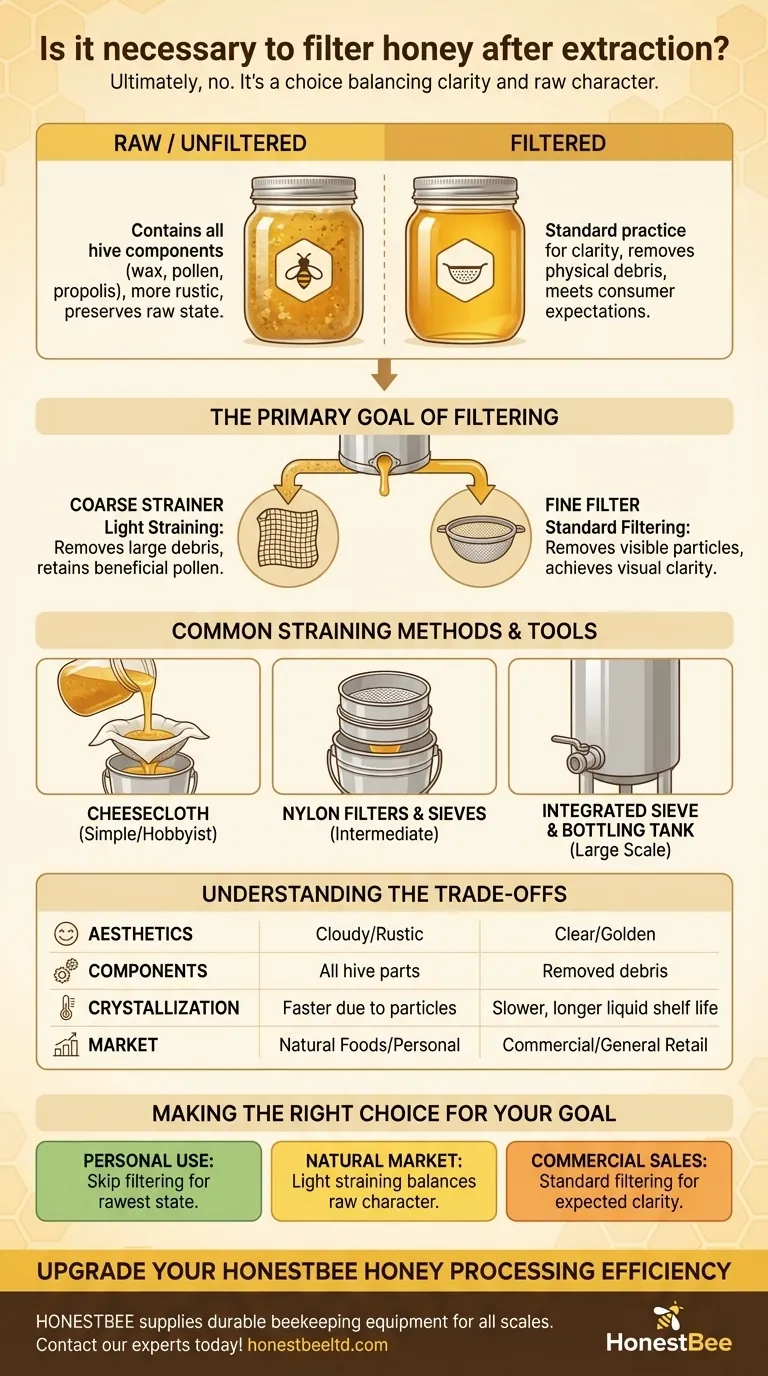
Related Products
- Professional Honey Filter with Tripod Support Stand
- Professional Cone-Shaped Honey Filter with Reinforced Steel Ring
- Professional Stainless Steel Honey Filter with Support Handle
- Two-Stage Plastic Honey Filter for Buckets
- Nylon Honey Strainer Square Filter Cloth for Honey Filters
People Also Ask
- What filter size for honey? A Beekeeper's Guide to Straining for Clarity and Quality
- What is the simple straining method for honey processing? A Guide to Raw Honey for Hobbyists
- Why is filtering honey considered an essential step in honey processing? Ensure Quality and Commercial Viability
- What is better, a 100 or 200 micron filter? Find the Right Fit for Your Water System
- What is the role of filtration in honey processing? Ensure Purity, Clarity, and Shelf Life
